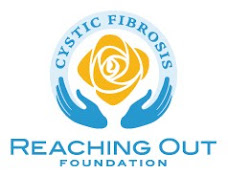Wait don’t give up yet…. By Susan Burroughs
Few things strike more fear in a transplant patient than hearing the words:
chronic rejection. I received my TWO NEW LUNGS on May 23, 2000. This winter, I was faced with that unfortunate diagnosis 8 years post transplant. I was terrified—distraught, but I knew there was hope.
Susan in Birmingham undergoing
treatment August 20
 08
08My transplant center, The University of Alabama at Birmingham, is one of the only centers in the southeast that does a procedure called “photopheresis” for lung transplant patients. Many transplant centers do not consider this treatment as an option. UAB, however, uses it on all of their patients in rejection, usually at the first sign of trouble.
Before I could start photopheresis, I had to have a Vortex port inserted into my chest that would stay for the duration of the photopheresis treatments. I then got a seven day dose of thymoglobulin to suppress my immune system dramatically. The photopheresis itself did not start for another five weeks. I got my first treatment on August 5, 2008. During photo, blood is removed from your port in six cycles. During each cycle, the blood is run through a centrifuge where all the white blood cells (lymphocytes) are separated off. After 3 – 5 hours, the collected white blood cells are shot up with UVADEX and then hit with UV radiation during “photo activation”. When this step is complete, your radiated cells are transfused back into your body and you are ready to go.
The point of all of this is to ‘reprogram’ your white blood cells in hopes that they will stop attacking your rejecting organ. How does it actually work? No one really knows for sure. They just know after twenty years plus of treating heart transplant patients in rejection, photopheresis has been quite successful. Over the last ten years, it has been quite successful in lung transplant patients as well.
Photopheresis isn’t guaranteed to work, but what in life is? However, this treatment has proved over and over again to stabilize the declining pulmonary functions of lung transplant patients and in most cases, the pulmonary functions have improved.
The side effects of the treatment are minimal. The medicine used in photopheresis will make you more sensitive to sunlight for about 24 hours after treatment. For this reason, I have to take some simple but very important precautions to protect my eyes and skin. i.e. wear sunglasses, sunscreen and long sleeves. For 24 hours.
The treatment for lung transplant patients is approximately 15 months and I will receive 30 treatments over the 15 month time span. I will receive 2 treatments with each visit. For the first 6 visits, I will go in 3 week intervals. For the next 3 visits, 4 week intervals; the next 3 visits, 5 week intervals; next 3 visits, 6 week intervals. Right now, I expect to be finished with the treatment by September 2009.
After my transplant, my pulmonary functions were in the high to low 90’s. They dropped to the 70’s. This alerted my transplant team to be aggressive and start the treatment right away. Now, before transplant, I lived with pulmonary functions in the mid- 20’s to mid-10’s. So even if I stabilize in the 70%. I will never regret getting a double lung transplant. I continue to remain active during the treatments by playing tennis. I thank God and my donor every day for my gift of life.
If you would like to track my progress over the next several months, please visit http://twonewlungs.blogspot.com/




No comments:
Post a Comment